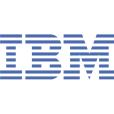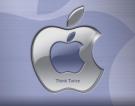 RightNow(R) Technologies, Inc. (NASDAQ: RNOW), today announced results for the fourth quarter and year ended December 31, 2006. Fourth quarter revenue was $28.8 million, and full year revenue was $110.4 million, representing increases of 17 percent and 27 percent over the comparable 2005 periods, respectively.
RightNow(R) Technologies, Inc. (NASDAQ: RNOW), today announced results for the fourth quarter and year ended December 31, 2006. Fourth quarter revenue was $28.8 million, and full year revenue was $110.4 million, representing increases of 17 percent and 27 percent over the comparable 2005 periods, respectively.The net loss in the fourth quarter of 2006 was $(2.3) million or $(0.07) per share, compared to net income of $3.0 million, or $0.09 per diluted share, in the fourth quarter of 2005. Fourth quarter 2006 non-GAAP net loss per share was $(0.04) which excludes stock-based compensation charges of $1.1 million. The net loss for the full year 2006 was $(5.0) million or $(0.16) per share, compared to net income of $7.7 million or $0.23 per diluted share for the full year 2005. Full year 2006 non-GAAP net loss per share was $(0.01) which excludes stock-based compensation of $4.6 million.
RightNow added more than 75 new customers in the fourth quarter and more than 500 new customers for the year. New, renewed and expanded customer relationships during the fourth quarter of 2006 included the AICPA, Ceridian Corporation, Nikon, Restoration Hardware, Samsung Electronics America, Sovereign Bank, SunRocket, UCLA, and the U.S. Census Bureau.
"Overall, 2006 was a strong year," stated Greg Gianforte, founder and CEO. "We grew bookings 50% and cash flow from operations more than 80%. Our products served 1 billion customer interactions during the year, providing the backbone for high customer satisfaction and tangible cost savings. We’re pleased to announce that our first customers are now live on RightNow 8." Susan Carstensen, CFO, added, "As noted in our preliminary announcement, we are seeing an accelerating shift toward recurring revenue agreements in our customers’ buying decisions. Beginning in 2007, we are essentially eliminating perpetual revenue from our business model by taking them off our product price list. For those customers in our pipeline and our existing customers that prefer perpetual licenses, we will work to structure ratable arrangements. While this model change reduces our overall revenue and earnings guidance for 2007, we still expect to drive approximately 40% growth in recurring revenue and 30% growth in cash from operations."
"Change that aligns us with our customers' preferences is good for our business" said Gianforte. "We expect to return to profitability in 2008 and to create greater shareholder value as a result of these changes. We are excited about the opportunities in front of us and look forward to another successful year in 2007."
Guidance
For the full year 2007, the Company expects revenue in the range of $116 to $120 million, composed of 40 percent growth in recurring revenue and 15 percent growth in professional services revenue. The Company’s previous guidance for perpetual revenue was approximately $25 million for 2007. Given the business model changes, the Company now expects this business to produce approximately $2 million in revenue in 2007.
The net loss per share for the full year 2007 is expected to be in the range of $(0.56) to $(0.64). Non-GAAP net loss per share, which excludes stock-based compensation, is expected to be in the range of $(0.36) to $(0.44). This compares with the Company’s previous guidance for non-GAAP net income per share was $0.30 to $0.35, with the vast majority of the earnings change resulting from the substantial decline of perpetual revenue.
Cash from operations for the full year 2007 is expected to be in the range of $32.5 to $37.5 million.
For the first quarter of 2007, revenue is anticipated to be in the range of $24 to $25 million. The first quarter net loss per share is expected to be in the range of $(0.23) to $(0.25). Non-GAAP net loss per share, which excludes stock-based compensation, is expected to be in the range of $(0.19) to $(0.21).
Quarterly Conference Call
RightNow Technologies will discuss its quarterly results via teleconference at 4:30 p.m. (ET)/2:30 p.m. (MT) today, January 31, 2007. To access the call, please dial (877) 502-9272, or outside the U.S. (913) 981-5581, at least five minutes prior to the start time. An audio webcast of the call will also be available at www.shareholder.com/rnow/medialist.cfm A replay of today’s conference call will be available on the company Web site at www.shareholder.com/rnow/, under the Investor Webcasts menu, from 5:30 p.m. (MT) on January 31, 2007 until 10:00 p.m. (MT) February 14, 2007. You may also access a replay of today’s call by dialing (719) 457-0820 or (888) 203-1112 with the replay passcode 7121442.
For the full report and complete SEC filing information and details please visit:
RightNow Technologies Q406 complete SEC details





















